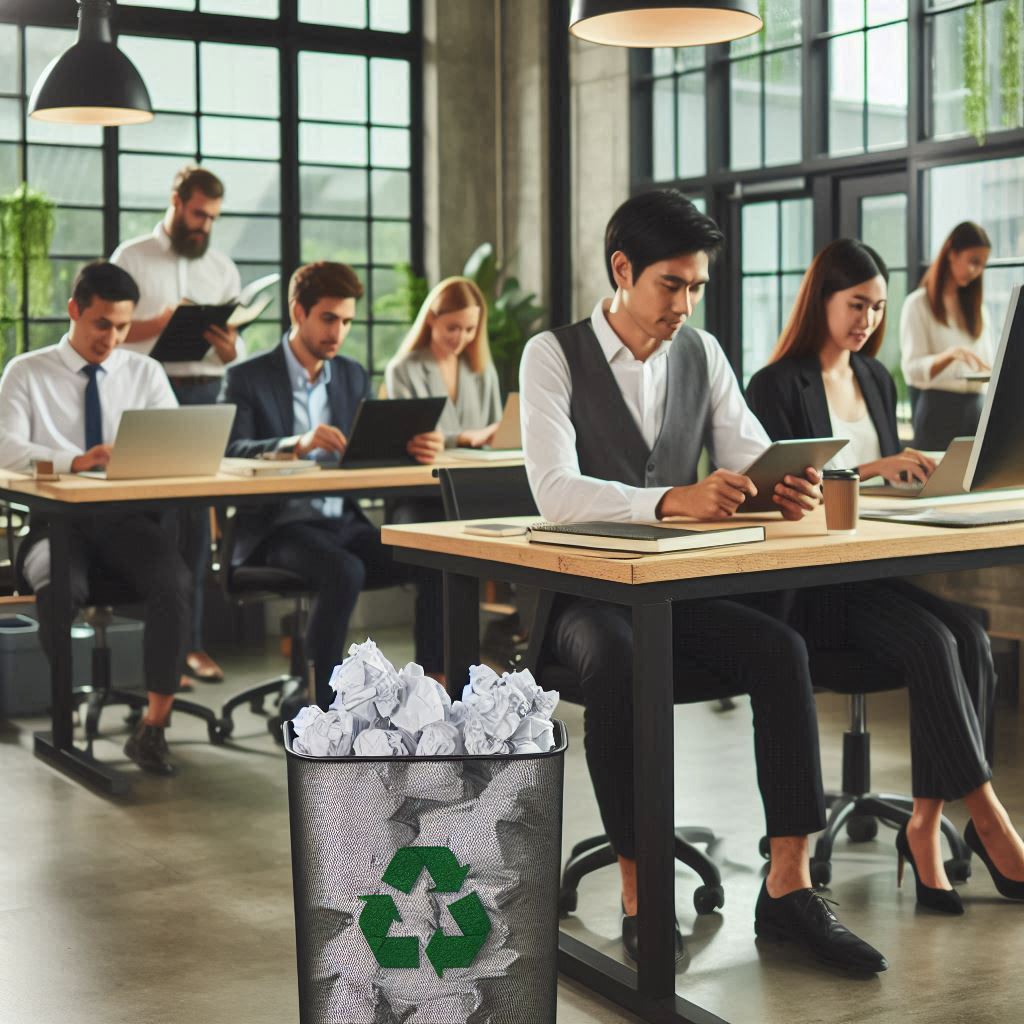
Erika Hagan
Encouraging sustainable commuting options for employees
Oct 01, 2024
As environmental concerns grow, businesses increasingly recognise the importance of encouraging sustainable commuting options for their employees. Commuting to work is a significant contributor to carbon emissions, particularly in urban areas where traffic congestion and pollution levels are high. By promoting alternative, eco-friendly commuting methods, companies can reduce their environmental footprint, improve employee well-being, and contribute to a greener future.
Sustainable commuting goes beyond reducing emissions; it fosters a sense of community, encourages healthier lifestyles, and saves costs for both employees and employers. This article will explore various strategies to promote sustainable commuting options, including bike-sharing programs, carpooling initiatives, public transportation incentives, and more.

Rosalie Herman
Solar-powered cleaning equipment
Oct 01, 2024
As the world moves towards more sustainable and eco-friendly practices, industries are increasingly looking for ways to minimize their environmental impact. Solar-powered cleaning equipment represents a significant leap forward in combining efficiency with sustainability. These machines harness the sun's energy, reducing the need for conventional electricity sources, and offer a range of benefits for businesses focused on cost savings, reducing their carbon footprint, and improving operational flexibility.
Solar-powered cleaning equipment is equipped with photovoltaic panels, which convert sunlight into electrical energy, powering the cleaning mechanisms. From small-scale applications like solar-powered robotic vacuums to industrial-grade solar-powered pressure washers, this technology is poised to revolutionize the cleaning industry. This article will explore how solar-powered cleaning equipment works, its environmental and financial advantages, and the technologies that make it an efficient and reliable option for businesses.

Terry Lake
Vertical gardens for air purification and aesthetics
Oct 01, 2024
In recent years, vertical gardens—also known as living walls—have become increasingly popular in residential and commercial settings. These innovative green installations provide a unique blend of aesthetic appeal and practical benefits, particularly in urban environments where space is limited. Beyond their visual charm, vertical gardens can significantly purify indoor air, enhance workplace environments, and contribute to overall health and well-being.
Vertical gardens offer a sustainable solution to beautifying office spaces while improving air quality. They filter out harmful pollutants, absorb excess carbon dioxide, and release oxygen, making them an eco-friendly addition to indoor spaces. Moreover, vertical gardens are particularly well-suited for urban environments where outdoor greenery is often scarce. As they occupy minimal floor space, these green walls help maximize the use of vertical space without compromising design or functionality.
In this article, we will explore various aspects of vertical gardens, including their air purification benefits, the role of hydroponic systems for water efficiency, the integration of sensor technology, plant species suitable for indoor vertical gardens, and how these installations can reduce noise pollution while enhancing aesthetics.

Alberta Sawyer
Smart irrigation systems for efficient water usage
Oct 01, 2024
Water is one of the planet's planet's most vital resources, and efficient management is crucial as we face challenges of population growth, climate change, and increasing demand for water in agricultural and urban environments. Traditional irrigation methods, such as sprinklers and manual watering, are often wasteful, leading to overuse of water, excess runoff, and water loss due to evaporation. To tackle these issues, intelligent irrigation systems have emerged as a solution that promotes both water conservation and improved plant health.
Smart irrigation systems leverage cutting-edge technologies to deliver water to plants in an optimal, timely, and sustainable manner. These systems rely on various advanced components, such as soil moisture sensors, weather data integration, remote control via mobile applications, and automation to ensure that plants receive the precise amount of water they need when they need it. This article explores how smart irrigation systems work, the technologies involved, and the many benefits they offer in promoting efficient water usage.

Hal McKenna
Biodegradable Cleaning Products for Eco-Friendly Maintenance
Oct 01, 2024
As environmental awareness grows, the demand for eco-friendly cleaning solutions has surged. Traditional cleaning products, while effective, often contain harmful chemicals that contribute to pollution, damage ecosystems, and pose health risks to humans and animals. These products are typically packaged in plastic, which adds to the global plastic waste crisis. To address these challenges, biodegradable cleaning products have emerged as an eco-conscious alternative. These products use natural, plant-based ingredients, are packaged in environmentally friendly materials, and are designed to break down easily without leaving harmful residues.
This shift towards biodegradable cleaning products is part of a larger movement toward sustainability, reducing the environmental footprint of daily household and commercial cleaning tasks. By using biodegradable products, individuals and businesses can maintain cleanliness while minimizing their impact on the planet. In this article, we explore the benefits of biodegradable cleaning products and practices, including the use of plant-based ingredients, eco-friendly packaging, certifications, bulk purchasing, and DIY recipes.

Earl Harman
Incorporating Indoor Plants for Natural Air Purification
Oct 01, 2024
Indoor air quality is a critical component of creating a healthy and productive environment, whether at home or in the workplace. With growing concerns about air pollution and its effects on health, many are turning to a natural solution: indoor plants. Incorporating plants into indoor spaces enhances aesthetics and significantly improves air quality by filtering out toxins, increasing oxygen levels, and promoting well-being.
Research has shown that certain indoor plants can effectively remove harmful pollutants, such as formaldehyde, benzene, and carbon monoxide, making them excellent natural air purifiers. This article will explore various strategies for incorporating indoor plants, focusing on low-maintenance options, plant arrangements, hydroponic systems, and their positive effects on productivity and stress reduction.

Priscilla Sanford
Promoting paperless office practices
Sep 27, 2024
In today's digital age, promoting paperless office practices is not only an environmentally conscious decision but also a practical way to improve workplace efficiency, reduce costs, and streamline operations. Paperless practices offer a wide range of benefits, from reducing paper waste and cutting printing expenses to enhancing document security and collaboration through digital platforms.
Transitioning to a paperless office requires a strategic approach that encompasses technology adoption, employee engagement, and a cultural shift toward sustainability. By implementing the right tools and encouraging paperless workflows, organizations can significantly reduce their environmental footprint and enhance productivity. This article explores critical strategies for promoting paperless office practices, including digital document management systems, electronic signatures, cloud storage, and digital note-taking tools.